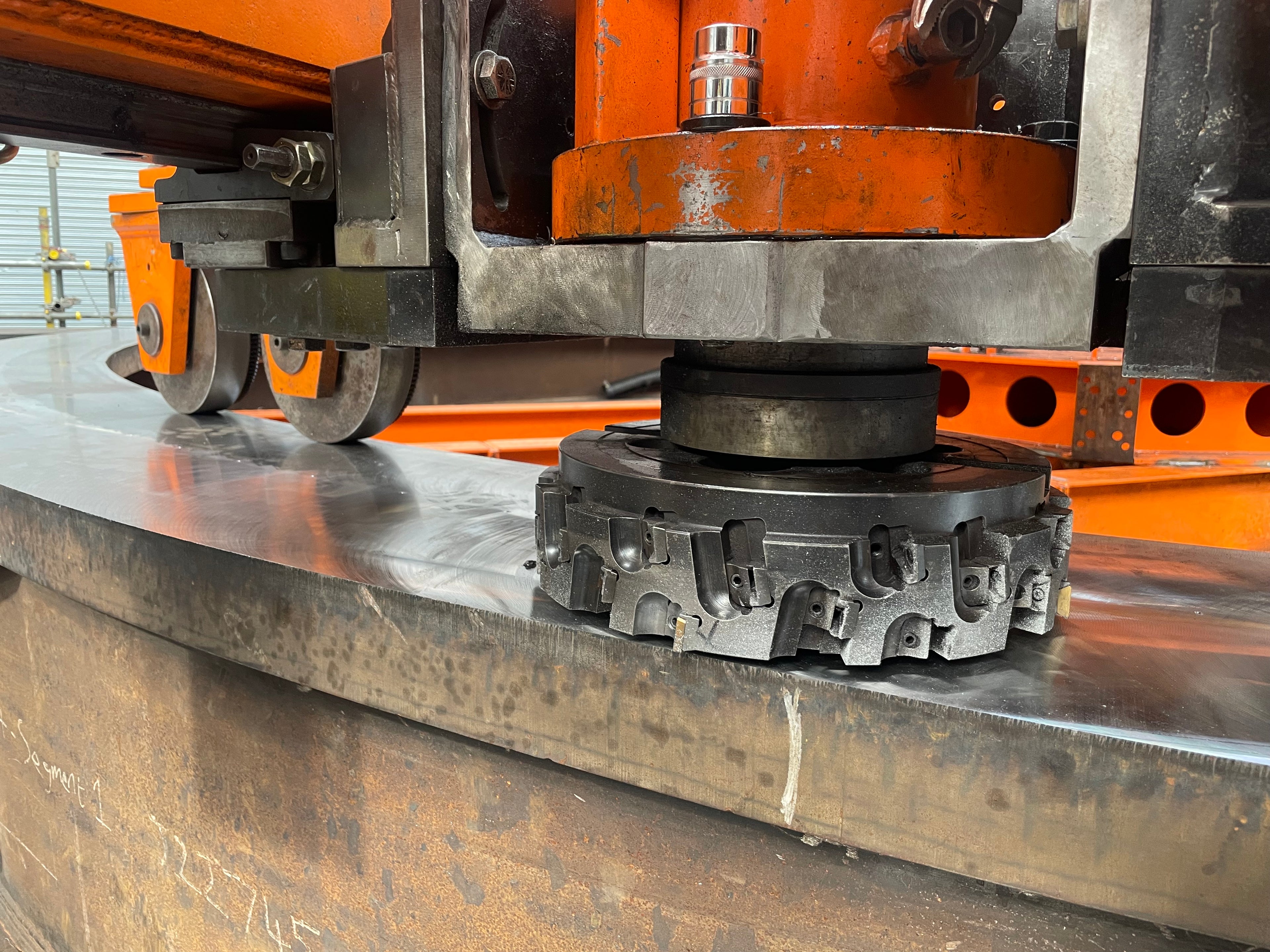
IN-SITU MILLING
Onsite in-situ milling is a precision machining process performed directly at the location of the equipment or structure that needs machining. Unlike traditional milling, which requires the removal and transportation of parts to a machine shop, in-situ milling is conducted on-site using portable milling machines. This method is highly effective for maintaining, repairing, or modifying large machinery and structures without the need for disassembly.
Key Aspects of Onsite In-Situ Milling
- Onsite Machining: Performed directly at the equipment's location, eliminating the need for disassembly and transport.
- Precision: Ensures high accuracy and quality, restoring surfaces to original specifications or modifying them as required.
- Portable Equipment: Uses advanced, portable milling machines that can be set up and operated in challenging environments anytime, anywhere.
- Versatility: Suitable for various materials and applications, including flat surfaces, keyways, flanges, and more.
Common Applications
- Industrial Machinery: Repairs and maintains large machines in factories and plants.
- Marine: Services ship components such as engine blocks, pump pads, and deck surfaces.
- Construction: Modifies or repairs structural components on-site.
- Power Generation: Maintains turbine casings, generator and pump pads, and other critical infrastructure.
Benefits
- Cost-Effective: Reduces costs associated with disassembly, transport.
- Time-Saving: Minimizes downtime by performing repairs and maintenance on-site.
- Precision: Achieves high levels of accuracy and surface finish.
- Convenience: Allows for maintenance and repairs in hard-to-reach or confined spaces.
Applications:
-
Pump Bed Milling
-
Keyway Extension
-
Gantry Milling
-
Conventional Milling
-
Angled Faces
-
Exchanger Division Plate
-
Milling Over Larger Areas
-
Orbital Flange Milling



